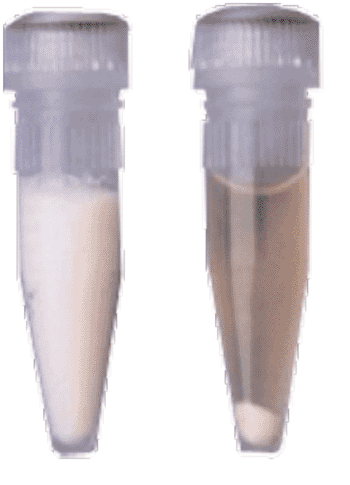Cyclodextrin Removes Lipemic Interference for Blood Tests
By LabMedica International staff writers
Posted on 03 Sep 2013
Interference from lipemia can significantly impede accurate analysis of a variety of laboratory tests independent of instrumentation or manufacturer. Posted on 03 Sep 2013
Conventional treatment of excess fat or lipids in a blood sample involves ultracentrifugation of specimens at approximately 199,000 × g to pellet and clarify interfering lipids, which requires additional instrumentation that may be costly for smaller laboratories offering a limited testing menu.

Image: LipoClear lipemic clearing agent (Photo courtesy of StatSpin).
Medical laboratory scientists associated with the Ohio State University Wexner Medical Center (Columbus, OH, USA) evaluated a lipid-precipitating nonionic-cyclodextrin polymer as an alternative to ultracentrifugation as a means of reducing cost and improving turnaround time. They collected 40 plasma and serum samples with grossly elevated lipemia, equal to or greater than three plus. Lipemia indices before treatment ranged from 3 to more than 10 with a median of 6 plus.
Specimens were split and either ultracentrifuged for 15 minutes at 199,000 × g or treated with LipoClear (StatSpin; Westwood, MA, USA) for five minutes, followed centrifugation for seven minutes at 3,461 × g. Clarified specimens were transferred to new tubes and analyzed on a Beckman Coulter DxC800 (Fullerton, CA, USA).
LipoClear-treated specimens showed good agreement with paired ultracentrifuged specimens for all assays tested: sodium, potassium, chloride, carbon dioxide, calcium, glucose, blood urea nitrogen, total protein, albumin, alanine aminotransferase, alkaline phosphatase, aspartate aminotransferase, total bilirubin, phosphorous, creatinine, and creatine kinase. Sodium demonstrated a mean positive bias of 3.6 mEq/L using LipoClear, compared with ultracentrifugation, but was considered within the limits of acceptability at pertinent medical decision points. Total protein demonstrated a mean negative bias of 0.65g/dL using LipoClear, compared with ultracentrifugation.
Furthermore, 78% of LipoClear-treated samples showed lower lipemia indices after treatment than did their paired ultracentrifuged specimens, suggesting a more-complete removal of interfering lipids. The authors concluded that the economic barrier of approximately USD 14,000 for purchasing ultracentrifuges for every satellite laboratory, as well as the need for a dedicated air supply for their operations, had previously prevented onsite treatment of affected specimens. Incorporation of the LipoClear protocol returned results for lipemic specimens 87% faster and costs showed a threefold decrease. The study was published in the August 2013 edition of the journal Archives of Pathology & Laboratory Medicine.
Related Links:
Ohio State University Wexner Medical Center
StatSpin













